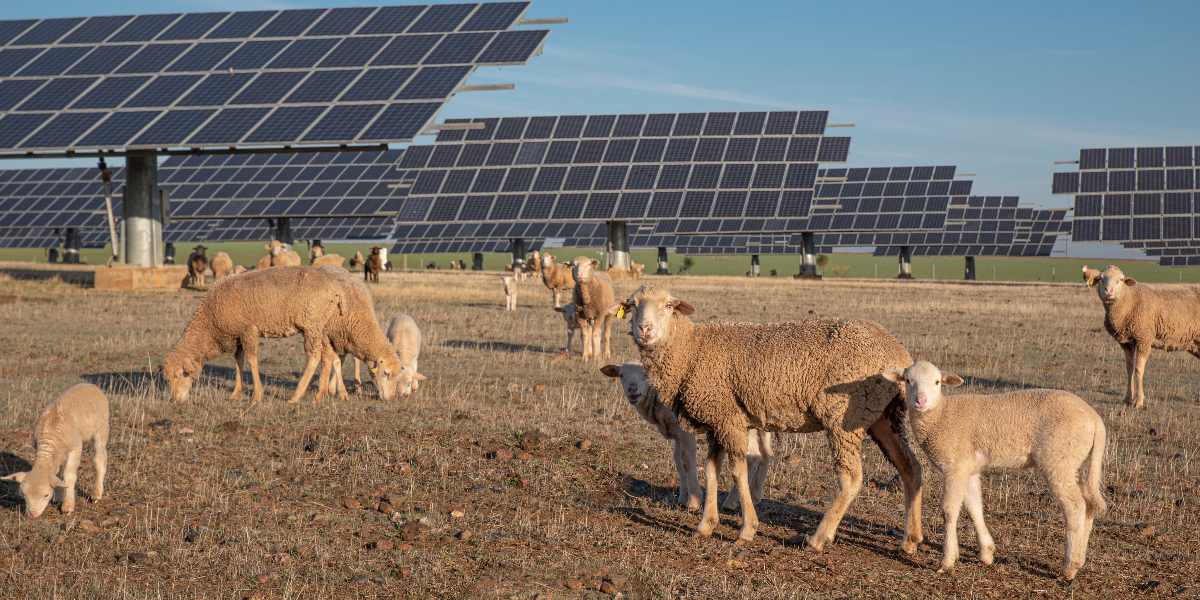A report out today shows Australia has enormous potential for grazing sheep and growing fruits and vegetables under solar panels, but better planning, more research and targeted government policy is needed to make these options work for local farmers.
Agrivoltaics (also referred to as ‘agrisolar’) refers to co-locating agricultural production systems with solar development.
Co-locating our food and energy systems on developed land presents a promising pathway for farmers, solar developers and governments, provided it is well planned and executed.
The report Pursuing an Agrivoltaic future in Australia gathered insights from farmers, government representatives, consultants, researchers, and solar developers, on the challenges and opportunities of agriculture and solar developments. EnergyCo was a key partner in the delivery of two workshops contributing to the knowledge gathering process.
The authors found agrivoltaic adoption has been slow, because of knowledge gaps, technical and economic impediments, poor planning, and a lack of clear policy guidance at development stage.
Karin Stark, Director of Farm Renewables Consulting and co-author of the report said they found there was considerable optimism for the feasibility of agrivoltaics in Australia.
“Change is required to ensure future solar developments are undertaken in a way that guarantees successful outcomes.”
“International studies have highlighted several benefits associated with solar over crops, such as enhanced yields in the case of certain produce like berries, tomatoes and leafy greens,” she said.
“Solar over vineyards has also demonstrated benefits to the sugar and alcohol content of grapes given the fruit’s sensitivity to hot weather. Overseas research has indicated advantages including increased soil moisture, reduced irrigation demands, protection from excessive heat, and safeguarding against frost and hail damage.”
Andrew Bomm, consultant with Progressive Agriculture and co-author of the report said there are clear economic benefits.
“Solar grazing can have clear economic benefits for both solar developers and graziers, and play an important role in achieving community support for large scale solar development in rural areas.”
“One key insight that came out loud and clear was that solar grazing systems require adequate planning and design prior to construction to avoid major problems later.”
The report underscored the need for research and demonstration sites, supportive policy, and knowledge sharing to pave the way for adoption of agrivoltaics in Australia on a significant scale.
The report’s policy recommendations include:
- The Australian government provide funding to develop best practice guidelines for developers, operators, and farmers for successful agrivoltaics adoption.
- The Australian government collaborate with the renewables industry to co-invest in ongoing essential research into agrivoltaics in different areas marked for solar development, and for different farming systems such as grazing, viticulture and horticulture.
- The Australian government develop a coherent framework of carbon and biodiversity incentives to maximise best practice agrivoltaics adoption, across both broadacre (grazing) and horticultural systems.
- There is an intergovernmental agreement between Commonwealth and State Governments to ensure consistent framework across Energy and Agricultural agencies.
The report can be accessed here
Something going on in your part of the region you think people should know about? Send us a news tip or email newsdesk@netimes.com.au.

